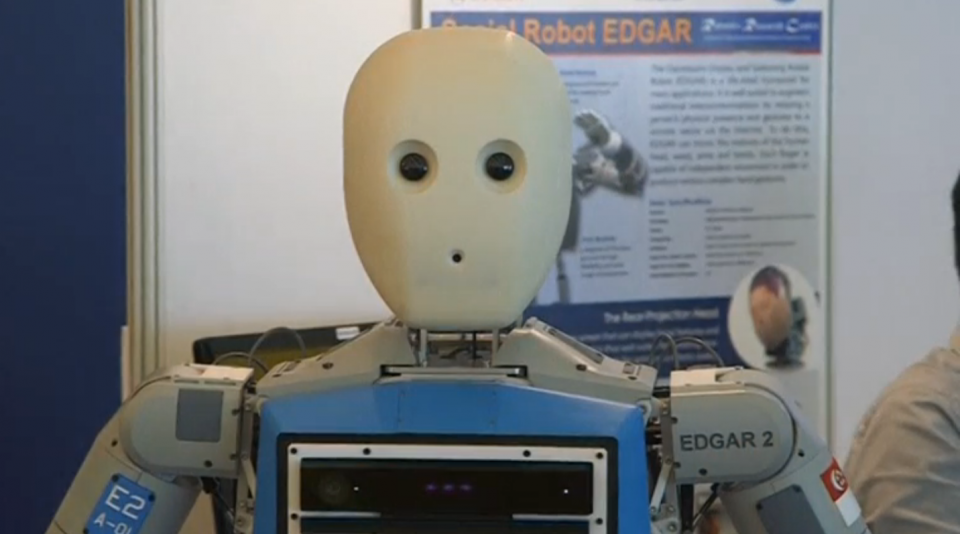
SINGAPORE (Reuters) – Robots are big business. The industry will be worth $188 billion USD by 2020, up from $91.5 billion last year, according to the Industrial Design Consultancy (IDC). Yet there remains a lot that robots are unable to do, partly because they are made from rigid metal or plastic.
If they were softer, lighter and less reliant on external power they could more safely and predictably move among and interact with humans, go where humans can’t, and perform some of the tasks other robots still can’t manage.
At a recent academic conference on robotics in Singapore new advances in ‘soft’ robots were showcased. Many of these drew inspiration from nature, challenging how we think of and interact with the robots we’re destined to share our future with.
On the conference sidelines Tie Feng Li, Associate Professor at Zhejiang University’s Institute of Applied Mechanics Soft Matter Research Center, told Reuters future robots should be made of material that is “soft, just as our muscle is, and the skin of animals.”
Students at the National University of Singapore (NUS) are coordinating with colleagues from institutions in China and the U.S. on their research.
Yap Hong Kai, a Malaysian PhD student, says the leap from laboratory to market shelf is getting closer.
In the lab “you can fabricate ten actuators in one day,” said Yap.
Yap’s own robot mimics a hand. It’s driven by air pressurisation and designed to help with movement of patients who have had a stroke or are suffering from arthritis.
Soft robots are more likely to move via muscles that expand and contract via heat or simple hydraulics than by traditional electrical power. Some combine sensing and movement in the same component – just as our fingertips react to touch without needing our brain to make a decision.
One robot being showcased by the students was inspired by origami and made with paper, sticky tape and carbon paint. The origami concept is being worked on around the world, and PhD student Hareesh Godaba says its potential is enormous.
“We can imagine an astronaut taking up a lot of actuators of thin sheets of paper in a small capsule onto the International Space Station and making a swarm of these robots for a very low-cost, and a lot of these robots can act together, work together, to move things or to explore,” he said.
Soft robots aren’t going to replace their hard-shelled brethren any time soon.
Experts say part of the problem is that soft materials break easily, but scientists are determined to prove that soft robotics has a big future.







